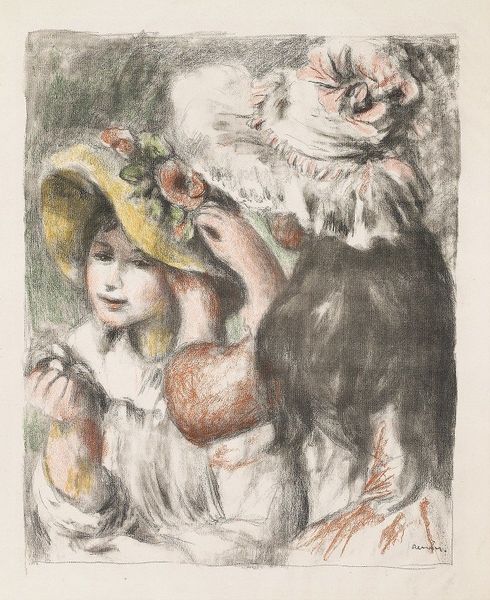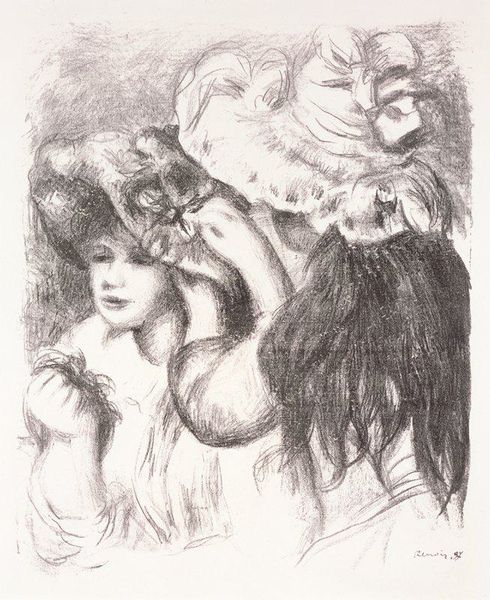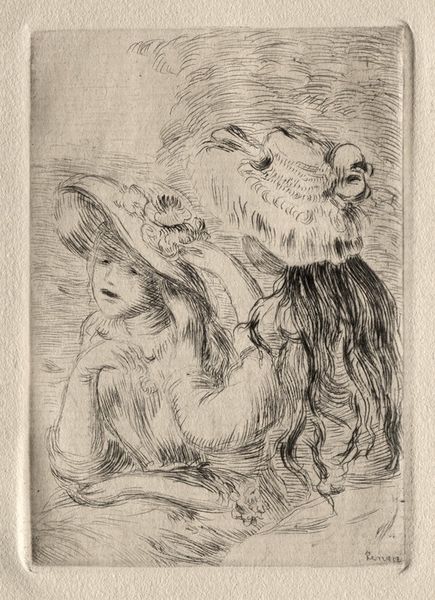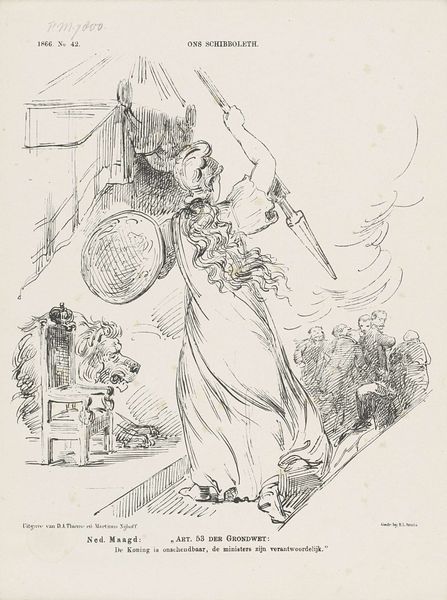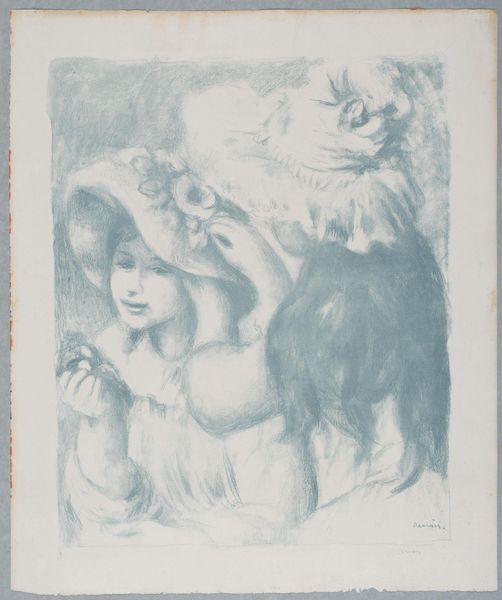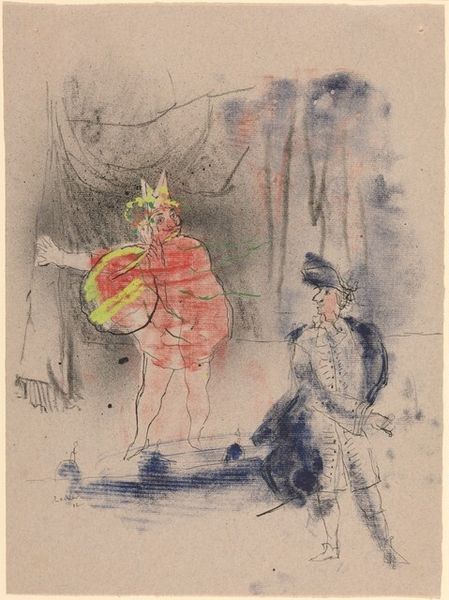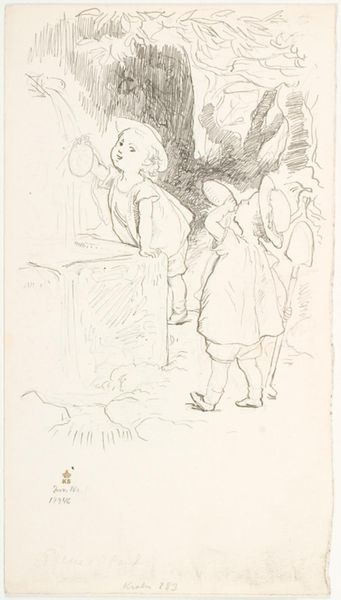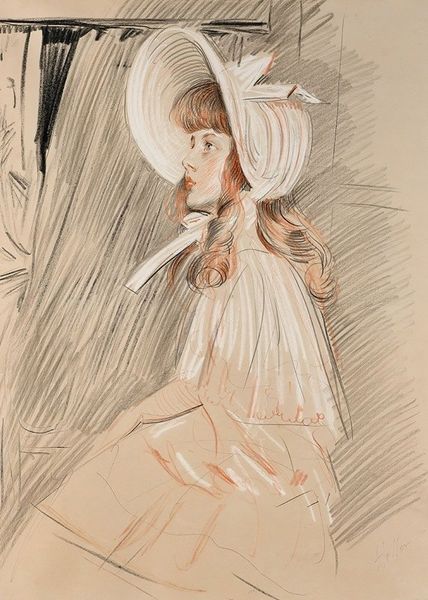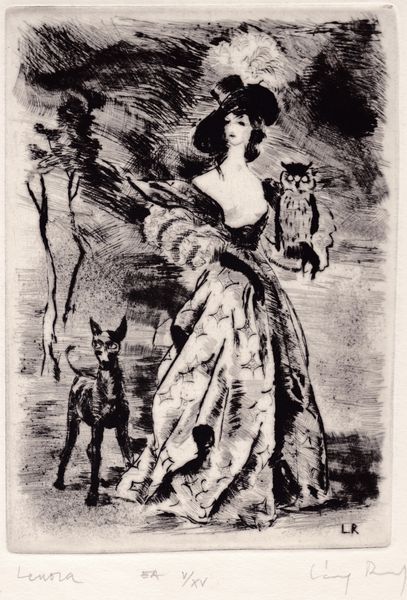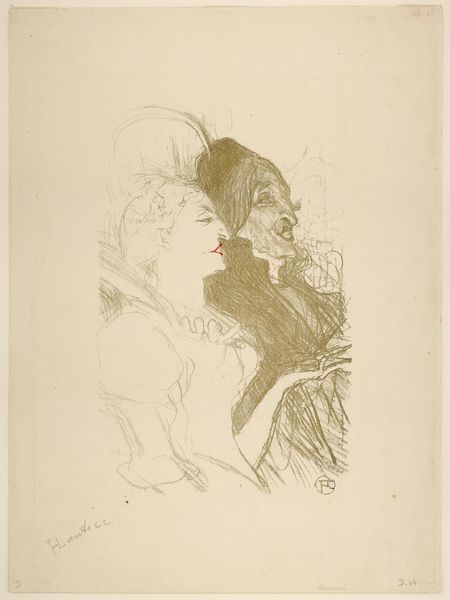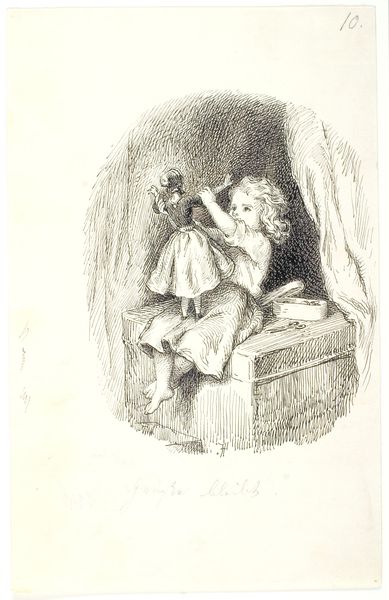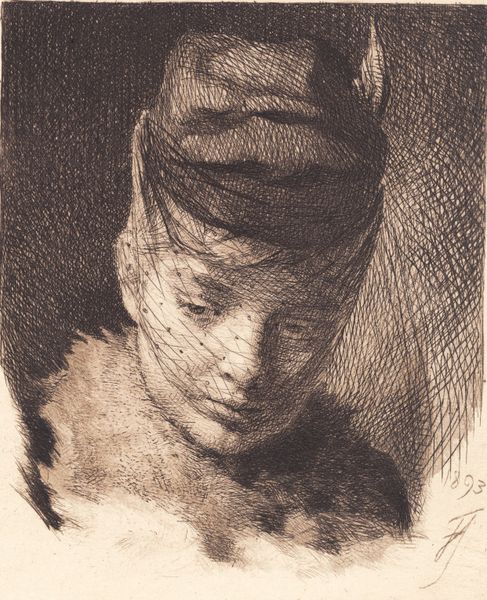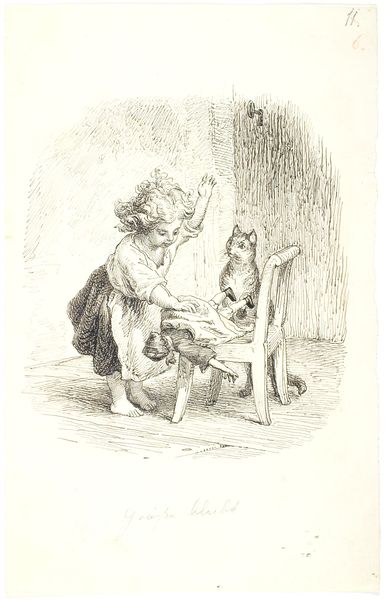
Dimensions: 48.4 x 60 cm
Copyright: Public domain
Curator: Pierre-Auguste Renoir's "The Hatpin," created around 1898, presents a fascinating glimpse into fin-de-siècle fashion and social life. It’s currently held in a private collection. Editor: It strikes me immediately as both elegant and slightly melancholic. There’s a softness in the lines, despite the direct gaze of the main figure. The subdued palette lends it an intimate feel, like a stolen moment. Curator: Precisely. Renoir's mastery of pastels and coloured pencils here invites us to consider the artistry embedded within these supposedly "minor" mediums. The piece showcases the techniques he employed to capture fleeting moments. What's intriguing is the juxtaposition of visible strokes, building form with layered color. Editor: And speaking of layering, look at how the hats themselves become almost sculptural. The hatpin, usually a functional object, now symbolizes something more complex—perhaps status, identity, or even a silent assertion of power within societal constraints imposed on women. How was such adornment intertwined with both self-expression and societal expectations? Curator: That reading certainly resonates. From a material standpoint, notice the type of paper Renoir selected. Its texture undoubtedly influenced the way the pastels and coloured pencils responded. This brings a layer of artistic intention that invites the viewer to acknowledge all the individual aspects required to make this finished work of art. Editor: Absolutely. Considering the era, such detailed portraiture was often a privilege of the wealthy. Yet, Renoir manages to imbue his subject with an accessibility that transcends mere class representation, prompting dialogue around feminine ideals, perhaps reflecting a growing social mobility during that time. Curator: Yes, we observe an interesting intersection of artistry, materials and representation that reflect cultural values during the period. "The Hatpin" gives clues to interpreting Impressionism not only as art but also a historical artifact. Editor: It leaves me contemplating the quiet strength of the woman depicted. It is so subtly rendered that it urges a dialogue between past constraints and evolving identities, subtly defying simple categorizations. It remains profoundly relevant. Curator: Agreed. Through Renoir’s lens, ordinary moments like this become powerful narratives when we attend to their material constitution.
Comments
No comments
Be the first to comment and join the conversation on the ultimate creative platform.
